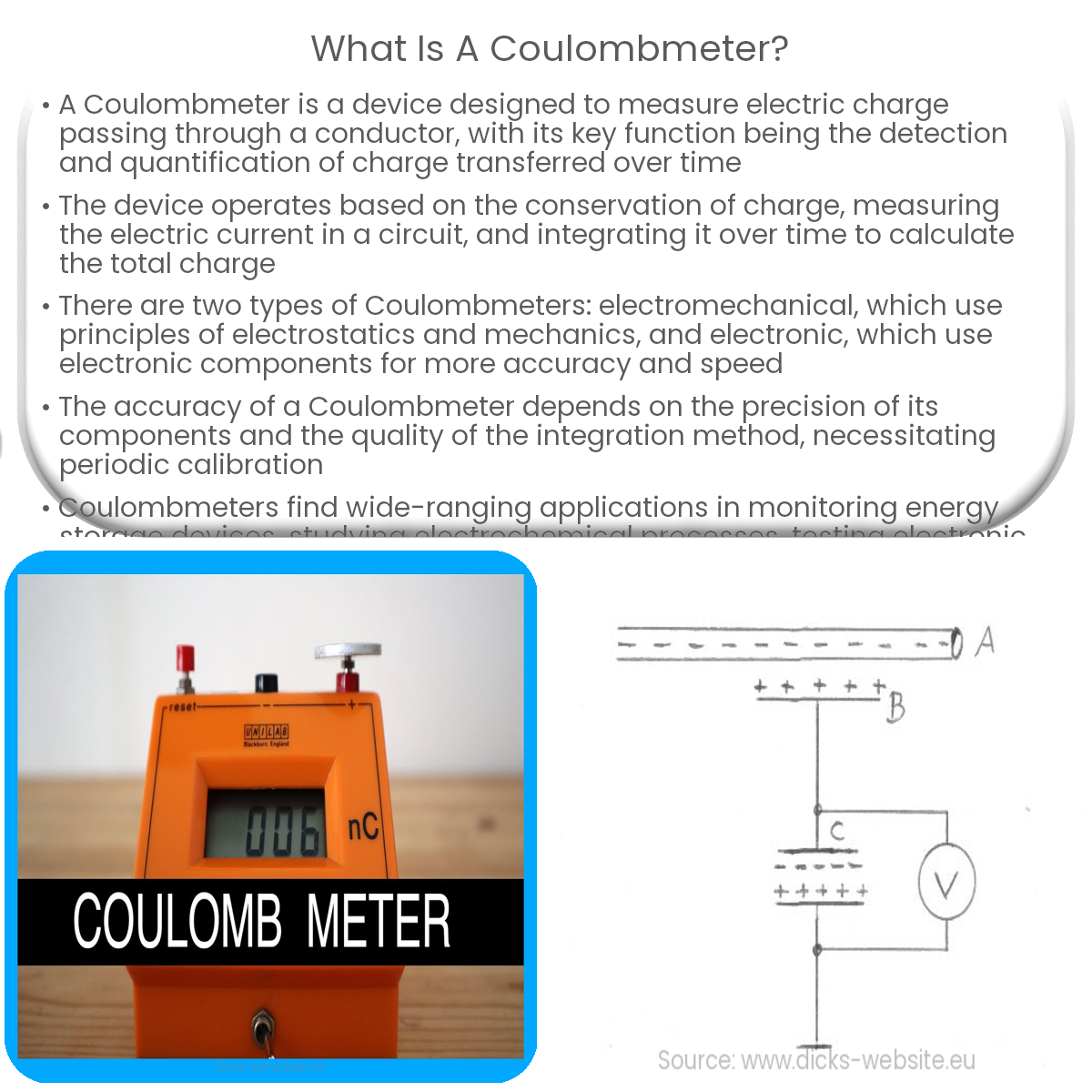A Coulombmeter is an instrument that measures electric charge passing through a conductor or circuit element, used in research and industrial applications.
Introduction to Coulombmeter
A Coulombmeter is an instrument designed to measure the electric charge passing through a conductor or a circuit element. The primary function of this device is to detect and quantify the amount of charge transferred in a given time, usually expressed in coulombs (C).
Operating Principle of Coulombmeter
The fundamental principle behind a Coulombmeter is based on the fact that charge is a conserved quantity. The device measures the electric current passing through the circuit and integrates it over time to calculate the total charge. This process involves converting the current signal to a voltage signal, which is then integrated over time to derive the net charge.
Types of Coulombmeters
There are two main types of Coulombmeters:
- Electromechanical Coulombmeters: These devices use the principles of electrostatics and mechanics to measure the charge. A typical example of an electromechanical Coulombmeter is the Kelvin balance, which measures the force between two parallel charged plates.
- Electronic Coulombmeters: These are modern devices that use electronic components like operational amplifiers, capacitors, and resistors to measure and integrate the current over time. Electronic Coulombmeters are more accurate, faster, and easier to use than their electromechanical counterparts.
Accuracy and Calibration
The accuracy of a Coulombmeter depends on the precision of the electronic components and the quality of the integration method used. To maintain accuracy, these devices need to be periodically calibrated using known charge values or reference standards. Calibration is essential to ensure that the measurements are reliable and consistent across different devices and applications.
Applications of Coulombmeters
Coulombmeters have various applications in science, engineering, and industry. Some of the most common uses include:
- Monitoring charge and energy in batteries and energy storage devices.
- Studying electrochemical processes, such as corrosion, electrodeposition, and electroplating.
- Measuring charge transfer in capacitors and other passive electronic components.
- Characterizing and testing electronic devices, like transistors and diodes, for charge storage properties.
- Research in fields like physics, chemistry, and materials science, where accurate charge measurement is essential.
In conclusion, a Coulombmeter is an indispensable instrument for measuring electric charge in various applications. Its ability to quantify the charge transfer in circuits and devices makes it an essential tool in scientific research, industrial processes, and quality control.


